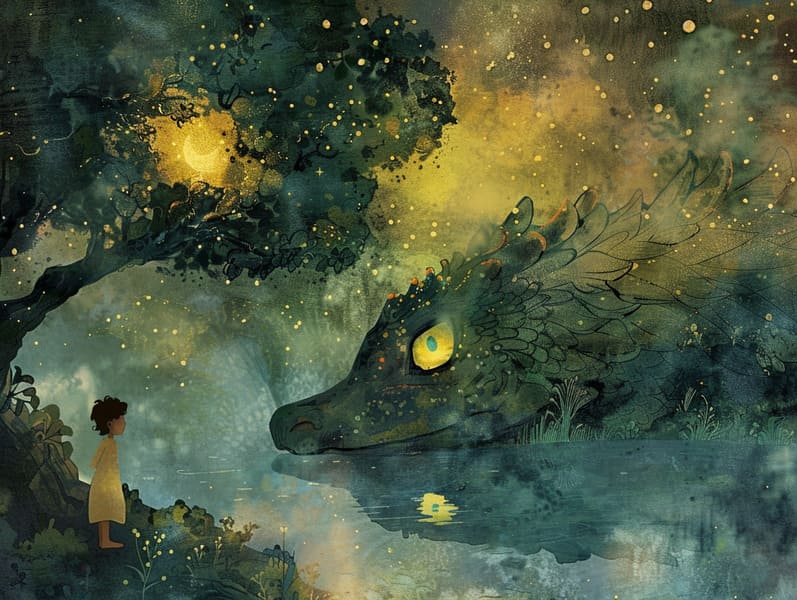
Fairy tales for kids have old origins. These tales have been shared from one generation to the next well before they were ever published. They developed from a variety of civilizations, including Eastern traditions. They were initially narrated among adults, often carrying themes and messages reflective of the societal norms and beliefs of the time.
Jacob and Wilhelm Grimm, Jacob and Wilhelm (the Grimm brothers), were among the first to gather and publish many of these beloved fairy tales. Their collection, "Grimm's Fairy Stories," included tales like "The Story of Cinderella," "Hansel and Gretel," and "Little Snow White," which have since become mainstays in the world of beloved fairy tales. Similarly, the Danish author's whimsical narratives, such as "The Sea Maid," and "The Duckling that Could," have touched hearts worldwide, securing their place in the pantheon of timeless fairy tales.
Despite their ancient origins, traditional fairy tales remain as impactful as ever, especially as children's night stories. These fantastical tales are now available in different formats, including vividly illustrated books, charming animations, and online fairy tales.
Their ongoing significance can be linked to several captivating elements:
Vital Lessons: Ancient fairy tales often impart important moral lessons. Tales like "The Story of the Boy Who Cried Wolf" teach the merit of integrity, while "The Tale of the Tortoise and the Hare" point out the merits of resolve and modesty. These narratives offer the young clear distinctions between moral and immoral, developing their moral compass in a kind yet lasting way.
Warmth and Understanding: Ancient fairy tales frequently showcase heroes facing obstacles and hardships, motivating listeners to sympathize with their struggles and cheer for their triumphs. For instance, "Beauty and the Beast" points out the benefit of looking deeper to see the inner self of a person, building compassion and appreciation.
Cultural Knowledge: Many timeless fairy tales are steeped in the cultural contexts from which they blossomed. Immersing in these stories can provide enlightening views into different social structures, enhancing a sense of global awareness and perception.
Imagination and Creativity: The extraordinary elements in ancient fairy tales—magic wands—motivate children’s creative minds. These tales bring readers to enchanted realms, activating creative ideas and a sense of marvel that stays a lifetime.
Ancient fairy tales are not only whimsical but also edifying. They serve as fascinating tools in building various brain and heart skills in children. When traditional fairy tales are read aloud, they promote verbal skills by presenting new word meanings and sophisticated sentence structures. This practice also promotes hearing perception and attention, as kids hang on every word, ready to see what happens next.
Furthermore, contemplating the themes and characters of ancient fairy tales can nurture evaluative skills and analytical skills. Children are shown to discern patterns, anticipate outcomes, and make sense of cause and effect. These analyses also encourage little ones utter their thoughts and feelings, boosting their emotional intelligence.
In today’s technological era, the proliferation of online storybooks has made these narratives more accessible than ever. Websites and digital apps give comprehensive collections of classic fairy tales that can be looked at or played anytime, anywhere. Fairy tales spoken are particularly sought after, extending an charming way for young readers to be a part of these magical stories. Audiobooks and read-aloud videos bring characters and settings to life, often supported by bewitching background sounds and soundtracks that boost the story adventure.
The persistent attraction of timeless fairy tales read more lies in their ability to transform to modern days while continuing with their main lessons. Contemporary renditions of these stories often include more different protagonists and modern settings, making them relevant to today’s audience. However, the key lessons of fearlessness, compassion, and righteousness remain unchanged, continuing to influence listeners of all ages.
Fairy tales also offer a sense of peace and understanding. They impart upon a well-arranged narrative with a obvious beginning, middle, and end, often closing with the wrap-up of conflicts and the triumph of honesty over deceit. This certainty can be comforting for the young, extending a sense of invariability in an always shifting world.
Ancient fairy tales continue to enthrall and train new generations, maintaining their charm and pertinence in modern society. As nighttime stories for kids, they make accessible a perfect blend of fantasy and learning, enriching moral values, empathy, and creativity. The abundance of online fairy tales and the well-liked nature of fairy tales narrated validate that these traditional fairy tales remain acquirable to new generations.
By holding onto and releasing these narratives, we continue to extol the rich tapestry of human imagination and cultural heritage. Whether you are discovering a richly illustrated book, seeing a web collection, or listening via an audiobook, the elegance of ancient fairy tales is always within reach. These fairy tales point out of the endless nature of storytelling and its ability to draw us together across centuries and lands.
Even if you are accessing a beautifully illustrated book, experiencing a virtual library, or playing an voice book, the spell of famous fairy tales is always within reach.
These narratives emphasize of the perpetual force of stories and its ability to bond us across centuries and lands, forging a link that captivates and teaches alike.